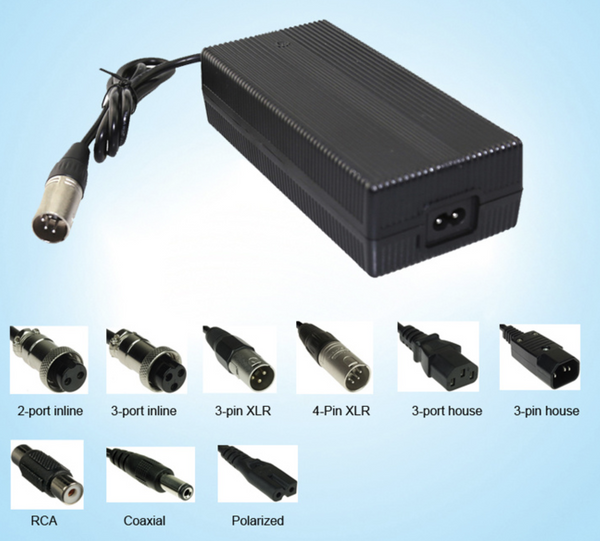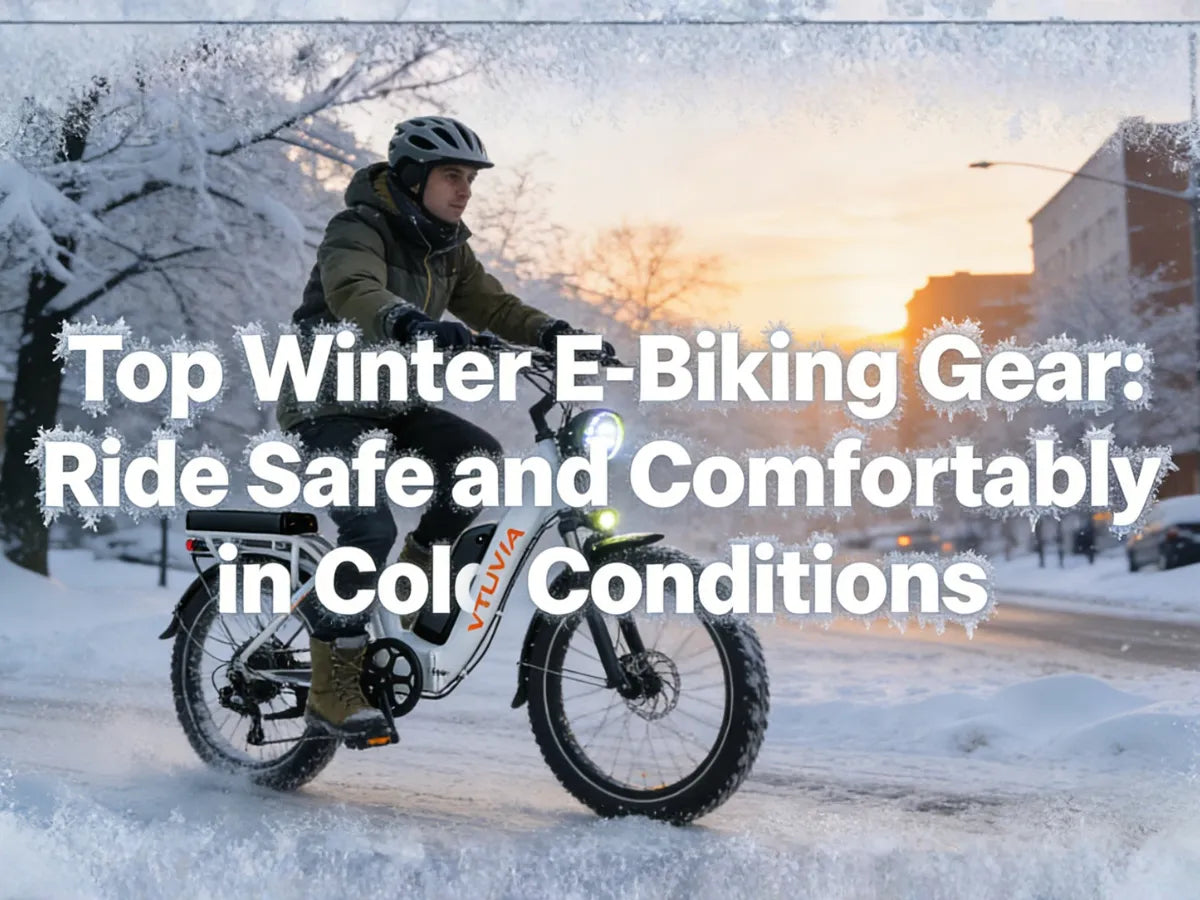I. Introduction
Electric bikes or e-bikes have become increasingly popular in recent years as a more eco-friendly and cost-effective mode of transportation. However, one of the biggest challenges faced by e-bike riders is finding ways to charge their batteries when a charger is not available. This article aims to provide essential tips and alternative charging methods for e-bike riders.

II. Understanding E-Bike Batteries
A. Types of e-bike batteries and their specifications
E-bike batteries come in a variety of sizes and types, but most e-bikes use lithium-ion batteries. These batteries are rechargeable and have a high energy density, which means they can store a lot of energy in a small space. They also have a relatively long lifespan, but their performance can degrade over time.
B. Factors affecting battery life and charging requirements
Factors that affect battery life include temperature, usage, and storage. Extreme temperatures, frequent use, and improper storage can all contribute to reduced battery life. Additionally, preserving battery health is crucial for off-grid charging. Proper care and maintenance, such as regular charging and minimizing deep discharging, can help prolong battery life and optimize performance during alternative charging methods.
C. Importance of preserving battery health for off-grid charging
It's crucial to remember that e-bike batteries require proper care and maintenance to function effectively and last for a significant period of time, especially during off-grid charging situations. Heat can be detrimental to the battery's lifespan, so it's important to keep it at a cool temperature and avoid overcharging. Regular charging and avoiding deep discharges can help extend the battery's lifespan as well. Additionally, it's essential to handle the battery with care and follow the manufacturer's guidelines for charging and storage. By properly caring for your e-bike battery, you can ensure that it provides reliable performance and lasts for years to come.

Options For Charging Without A Charger
III. Solar Charging

If you have a solar panel, it can be used to charge your e-bike battery. To effectively do this, you will need a solar panel that has a built-in charge controller and a battery charger with a solar panel adapter. This can be an excellent choice if you are traveling off the grid or have a large solar panel setup at home.
When handling solar panels, it's important to take precautions to ensure your safety. Wear protective gear such as gloves, closed shoes, and eye shields to protect yourself from electric shocks and exposed wiring. Depending on the size and weight of the solar panels, it may be necessary to have two people present to adjust their position. This will prevent any accidents or injuries while handling the panels.
Selecting the right solar panels and accessories is essential for effective charging. Factors to consider include the wattage, voltage, and amperage of the solar panel, as well as the type of connector required. Setting up a solar charging system involves connecting the solar panel to the charger and ensuring that it is in direct sunlight.
Best practices for solar charging vary depending on the environment. For example, in hot weather, it's important to keep the battery and solar panels cool to prevent damage. In cold weather, the battery may require more frequent charging to maintain optimal performance. By following best practices for solar charging in different environments, you can optimize your charging results and prolong the life of your e-bike battery.
IV. Portable Charger Charging

A power bank, also known as a portable battery pack, is a convenient option for charging electronic devices on the go, including e-bike batteries. Most power banks feature a USB port that can be used to charge your e-bike battery using a USB-to-battery adapter. These adapters can be found online or at bike shops. Keep in mind that the capacity of a power bank may not be enough to fully charge a large e-bike battery.
If you don't have a power bank, you can still charge your e-bike battery using a cord and an electric device with a USB port. This could be a computer, wall socket, or any other device that has a compatible USB port. It's important to ensure that the device is compatible with your e-bike battery and that you are following the manufacturer's charging instructions to avoid damage to the battery.
Portable Charger charging offers several benefits, such as convenience and flexibility, but there are also limitations to consider. The capacity of a power bank may not be sufficient to fully charge a large e-bike battery, and it may take longer to charge than using a traditional charger. However, for emergency situations or short trips, this can be a viable option for charging your e-bike battery on the go.
V. Regenerative Braking
Regenerative braking, often referred to as "regen braking", is a method of charging e-bike batteries through the use of Direct Drive Motors. While it sounds like an attractive option for charging on the go, there are several challenges and considerations to keep in mind.
Direct Drive Motors, required for regenerative braking, are considerably heavier than other types of motors used in e-bikes. This added weight can affect the distance that riders can travel on a single battery charge. Additionally, Direct Drive Motors do not have a freewheeling mechanism, which means that once the battery runs out of charge, pedal resistance increases significantly, making pedaling difficult.
While regenerative braking can recover some energy during a ride, it only recovers around 5% of the overall charge of the battery. This may not be enough to justify the added weight and resistance of using a Direct Drive Motor.
Regenerative braking also generates significant heat during charging, which can be damaging to lithium batteries, reducing their overall lifespan. Moreover, the forces produced by Direct Drive Motors can cause fatigue in aluminum frames over time, particularly at the dropouts where the axle engages the frame.
In conclusion, while regenerative braking may sound like an efficient way to charge e-bike batteries, its practicality is limited due to the added weight, increased resistance, and potential damage to batteries and frames.
VI. Pedal-Powered Charging
If your e-bike has the inbuilt feature of charging through pedals, then you're in luck! This method uses the kinetic energy produced when riding your e-bike to create electrical energy that charges the battery.
When you ride your e-bike, kinetic energy is produced but often lost through heat in the brake pads and wind resistance. However, some e-bikes are designed to capture this energy and convert it into electrical energy to charge the battery. By using the conservation of energy principle, these e-bikes make pedal-powered charging a sustainable and practical alternative charging method.
DIY methods for pedal-powered charging can also be implemented by attaching generators or alternators to the bike's rear wheel, which can generate electricity as the wheel turns while pedaling. However, these DIY methods may have limitations in terms of efficiency and output.
Limitations and considerations for pedal-powered charging include the amount of energy produced, which may not be sufficient to fully charge the battery, and the additional weight and space required for the charging system. It's also important to consider the level of effort required to generate the necessary energy, which can impact the rider's overall performance and experience.
VII. Car Charger Charging

If you have a car with a cigarette lighter socket, you can use a car charger to charge your e-bike battery. Simply connect a battery charger with a car adapter to the socket to begin charging.
However, it's crucial to exercise caution when using a car battery as a power source for charging an e-bike battery. The higher voltage of the car battery can damage the e-bike battery if current flow is not regulated. To regulate current flow, light bulbs can be connected to the wiring between the car battery and the e-bike battery, acting as resistors to reduce current flow to safe levels.
It's essential to monitor the charging process closely when using this method, as overheating or receiving too many amps of power can result in long-term damage to the e-bike battery.
While using a car charger for e-bike battery charging has its advantages, such as convenience and accessibility, there are also some cons to consider. One example is the need to regulate current flow to prevent damage to the e-bike battery. Additionally, mechanical charging options like car chargers may not always provide optimal charging results and may take longer to charge compared to other charging methods.
VIII.Charging Station Charging

The popularity of e-bikes has led to an increase in the development of charging infrastructure, including charging stations. These stations can now be found both indoors and outdoors at various locations such as restaurants, bars, and public areas.
If you need to recharge your e-bike battery while out on a ride, simply locate a nearby charging station and remove the battery from your e-bike. Then, place it in a compatible charging port. It's important to note that some stations may require a fee for use, and availability may vary by location.
To ensure effective Charging Station charging, it's essential to check the compatibility of your e-bike battery with the charging station before use. Additionally, verify the charging time required to fully charge your battery, and plan accordingly. Some stations may offer additional services like bike storage or security measures, which can enhance the overall biking experience while charging.
______________________________________________________________________________________________________________________________
IX. E-Bike Battery Care and Maintenance
The battery is one of the key components of an eBike, and taking proper care of it can help prolong its life and performance. Here are seven tips to help you charge your electric bike's battery properly:
Tip No. 1: Use the right charger

It is crucial to use the right type of charger specifically designed for your eBike battery, which is generally lithium-ion ranging between 36v to 48v or 2-7 amperes. A specific lithium-ion charger that requires 110v current is recommended. Make sure to seek advice from the brand's customer support if you have any confusion. Using the wrong charger can damage your battery's health and void its warranty.
Tip No. 2: Place battery on a clean, flat surface
Charge your battery in a dry place, away from direct sunlight, and always put it on a flat surface to avoid any damage.
Tip No. 3: Fully charge the battery before using it for the first time
When you purchase a new e-bike, make sure to fully charge the battery for around 12 hours before using it. This ensures the current flow through all cells, which helps maintain good battery health.
Tip No. 4: Check the battery level after every ride

Checking the battery level after every ride is important to keep track of the battery use. Don't let the battery level drop below 30%.
Tip No. 5: Avoid overcharging the battery
Overcharging the battery can cause its temperature to increase to an extreme level, which may damage the battery cells. Avoid overcharging by setting a reminder on your phone so that you don't forget to disconnect the charger when the battery is full.
Tip No. 6: Take the battery out of the bike to charge it every few months
Although some eBikes allow charging the battery without taking it out of the bike, it's better to remove the battery regularly to recharge and check all connections.
Tip No. 7: Ensure the battery is not empty before storing it away
If you plan to store your eBike for 2 to 6 months, make sure to charge the battery to at least 50% or to full if possible. Batteries are drained when kept idle, so it's essential to keep them charged.
By following these tips, you can maintain the health of your ebike battery and prolong its life.
X. Safety Considerations
Charging an electric bike requires careful consideration of potential hazards. Here are some safety tips to keep in mind:
- Always charge your electric bike in a well-ventilated area, away from flammable materials.
- Never leave your bike unattended while it is charging.
- If you must charge your bike indoors, plug it into a dedicated circuit that is not used by any other appliances, to prevent overloading the circuit and causing a fire hazard.
- Charge your bike in an area protected from rain or snow if possible.
- Follow the manufacturer's instructions when charging your bike and avoid modifying the charging system in any way. Modifying the system could void your warranty and potentially damage your bike.
Additionally, it is important to comply with local regulations and guidelines when charging an electric bike. By following these safety considerations and complying with regulations, you can ensure a safe and effective charging experience for your electric bike.
XI. Different Types of Electric Bikes to Choose From
When shopping for an electric bike, it's important to know the different types available. Here is an overview of some of the electric bikes offered by Vtuvia:
- Mountain E-bike: Vtuvia offers several models perfect for mountain biking, such as the SJ26, SN100, and Reindeer. These bikes come equipped with a powerful motor that assists with pedaling, making riding uphill or on rough terrain much easier.
- Foldable E-bike: For those who need a more portable option, Vtuvia offers the SF20 and SX20 foldable electric fat tire bikes. Their foldable design makes them easy to carry on public transportation, store in the car trunk, or take camping and traveling.
- Commuter E-bike: The Giraffe model from Vtuvia is a great option for commuting, thanks to its 48v 14ALG battery that can achieve rapid acceleration and has a range of up to 40 miles in throttle mode and 60+ miles in pedal-assist mode when fully charged. The step-thru cruiser design also makes it comfortable for daily use.
No matter which type of electric bike you choose, make sure to select one that meets your needs and fits your lifestyle.
XII. Conclusion
In conclusion, e-bike riders have several alternative charging methods available to them when a charger is not available. Planning ahead for off-grid charging and understanding the different alternative methods can empower riders to fully enjoy the benefits of e-bikes while minimizing any inconveniences.





Share:
Weighing the Pros and Cons of 750W and 1000W Ebikes: VTUVIA EBIKE
Costco Electric Bike Review: A Comprehensive Guide